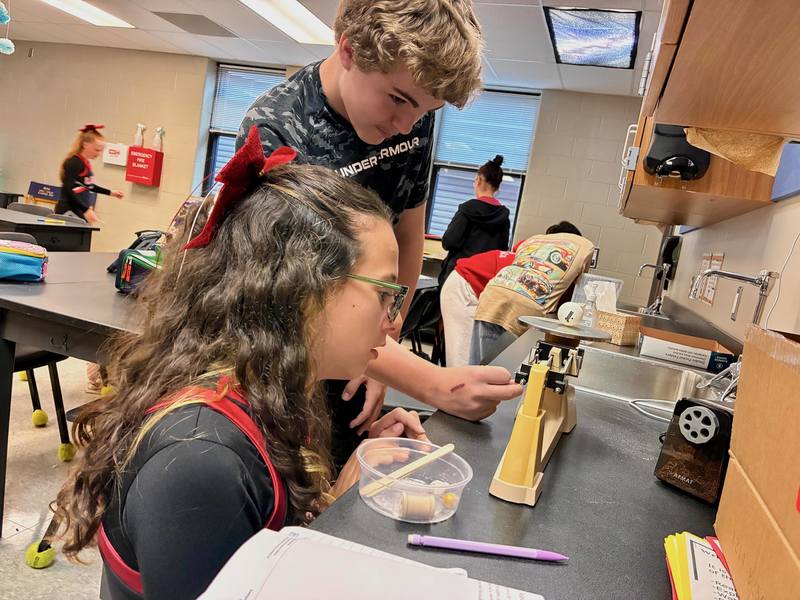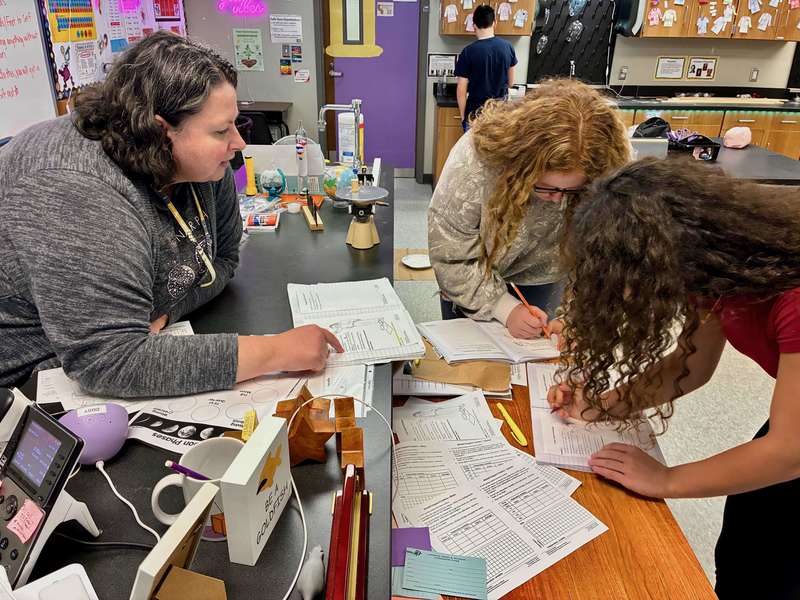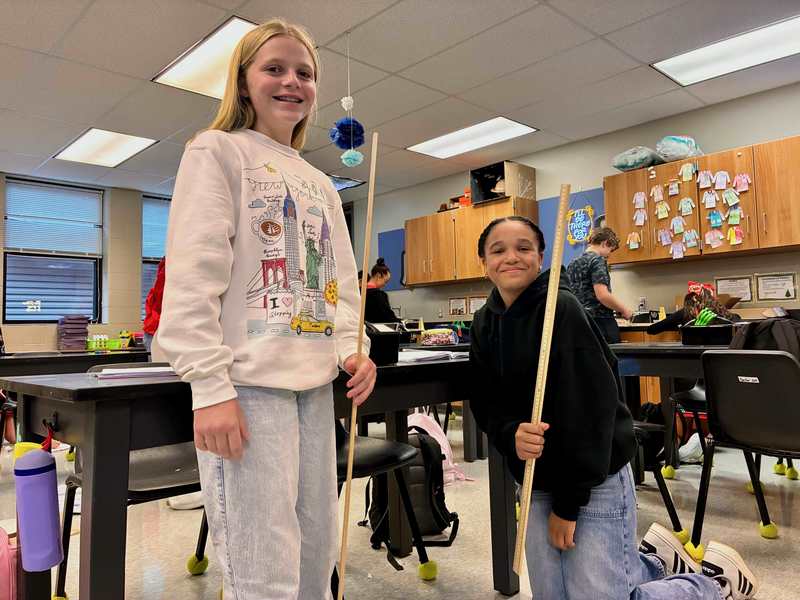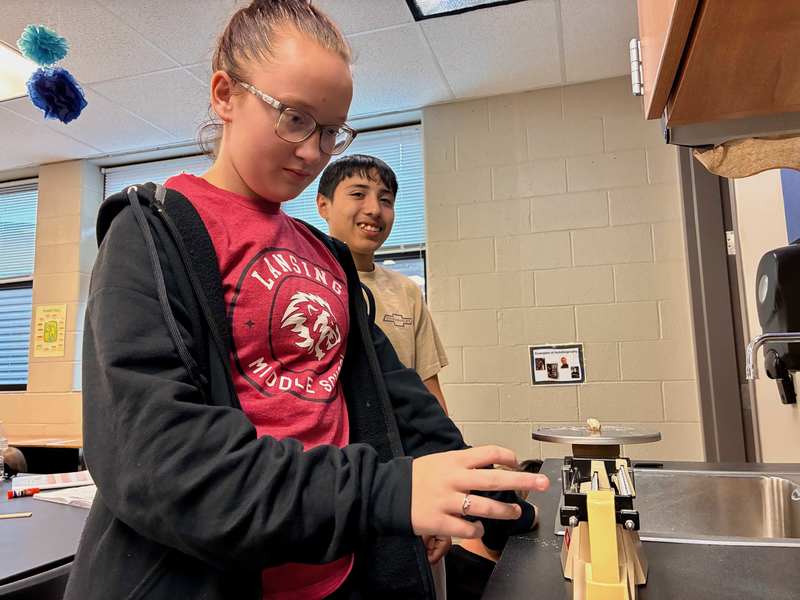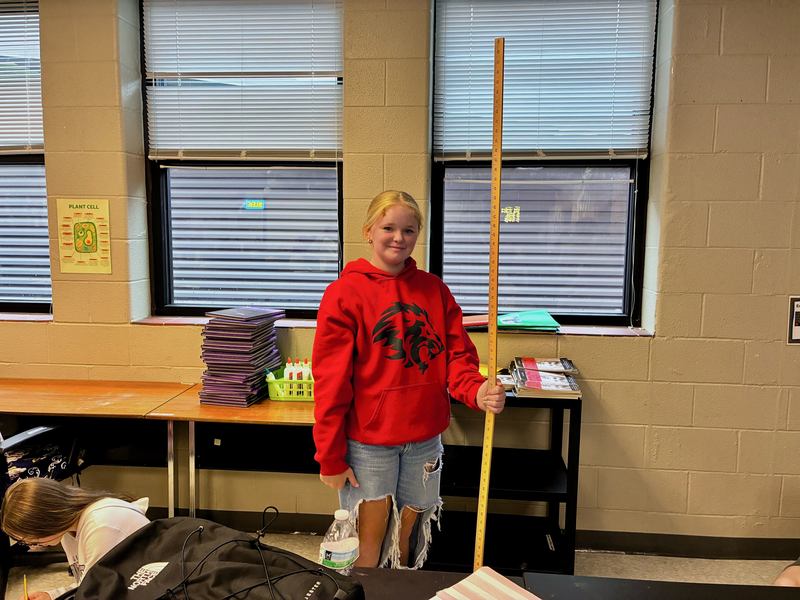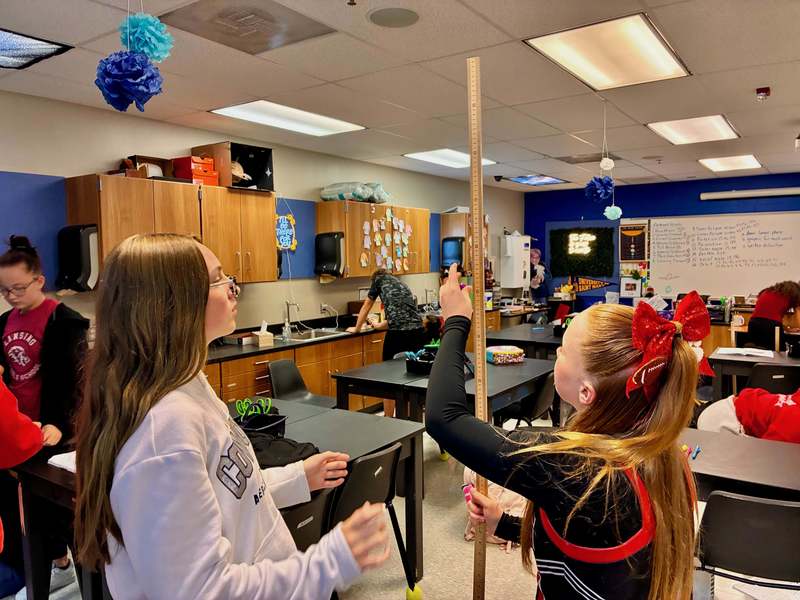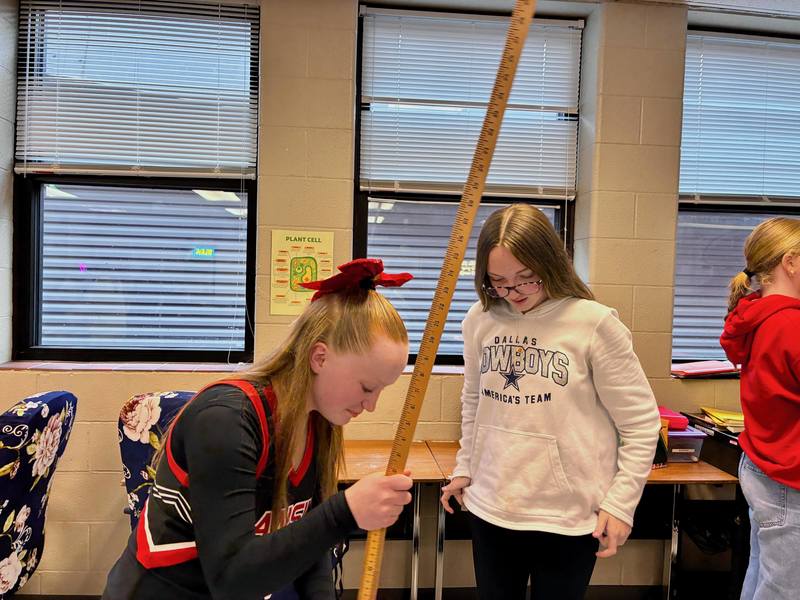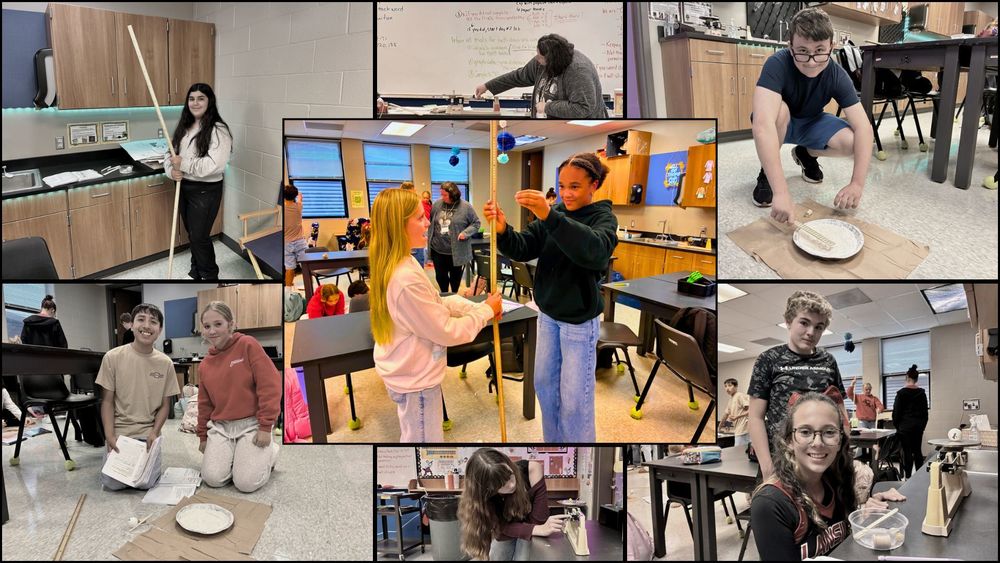Lansing Middle School 8th grade science students were able to participate in a hands-on experiment simulating how craters form on the surface of the moon.
The lab spans two days and challenges students to explore the relationship between variables like height, speed, and mass while observing the impact on crater formation.
Day 1: Speed and Height
On the first day, students investigated how the height from which an object is dropped influences the speed and size of the crater it creates. Using marbles, rulers, and meter sticks, they measured and compared the results to better understand the role of gravitational force.
Day 2: Mass and Materials
The second day shifted the focus to mass as the independent variable. Instead of changing the height, students dropped different objects (marbles, rocks, ping pong balls, and wooden spools) at the same height. Before each trial, students used balance beams to calculate the mass of the objects. Then, working in small groups, they measured crater diameters and recorded their data.
Real-World Science in Action
The experiment provided students with opportunities to collect, measure, and analyze data while making real-world connections to space science.
Eighth-grade science teacher Dr. Hollie Becker noted that her students were very engaged throughout the two-day lab.
"The first question they asked coming in on the second day was 'We get to do that lab again today, right?' They were smiling and laughing and time flew by as they recorded their data."
The lab brought classroom concepts to life and sparked discussions about how scientists study planetary surfaces and the forces that shape them. This lab was co-planned by Dr. Becker and Ms. Dale and is the second lab 8th grade students complete that is focused on the Moon.
